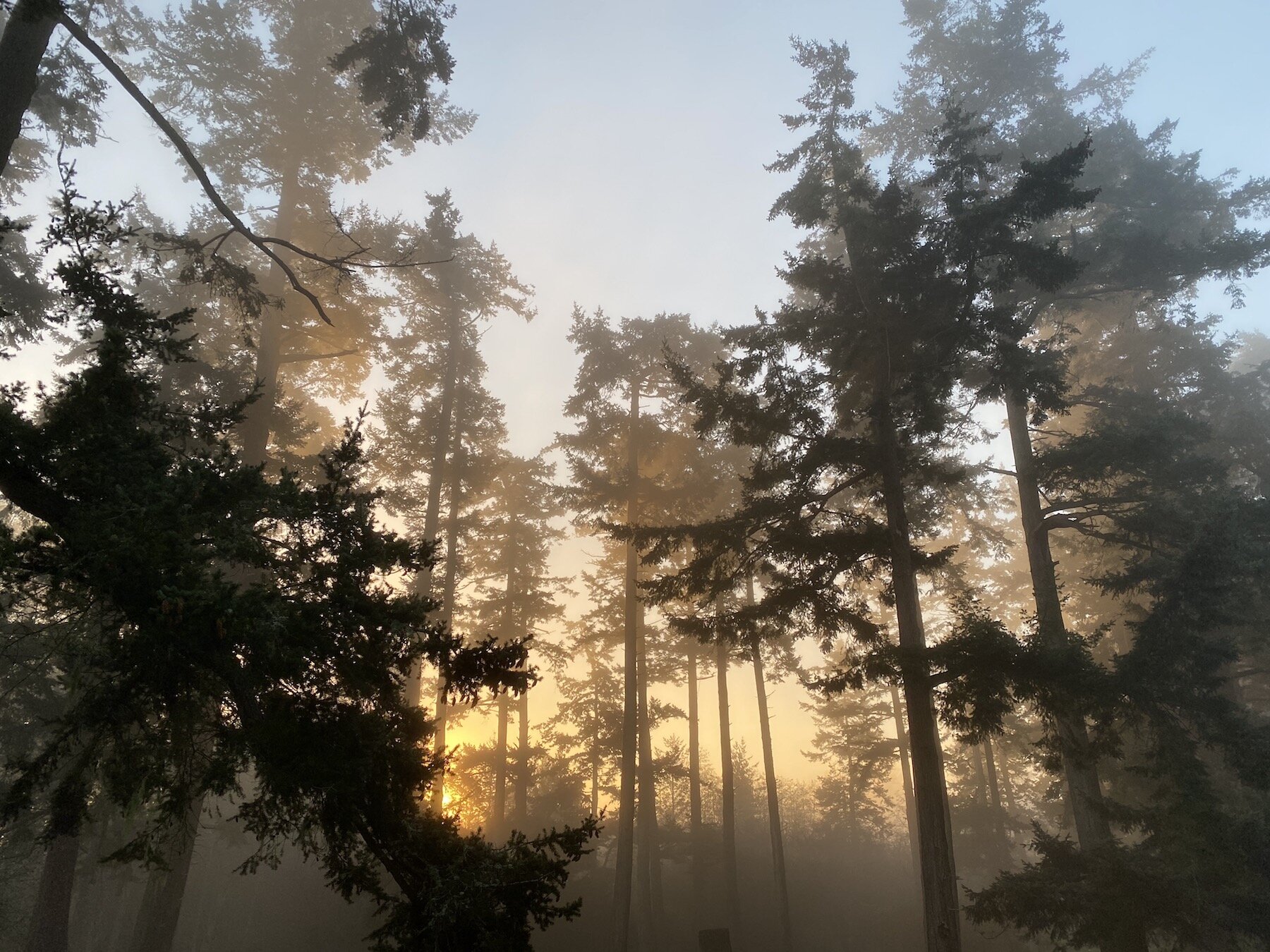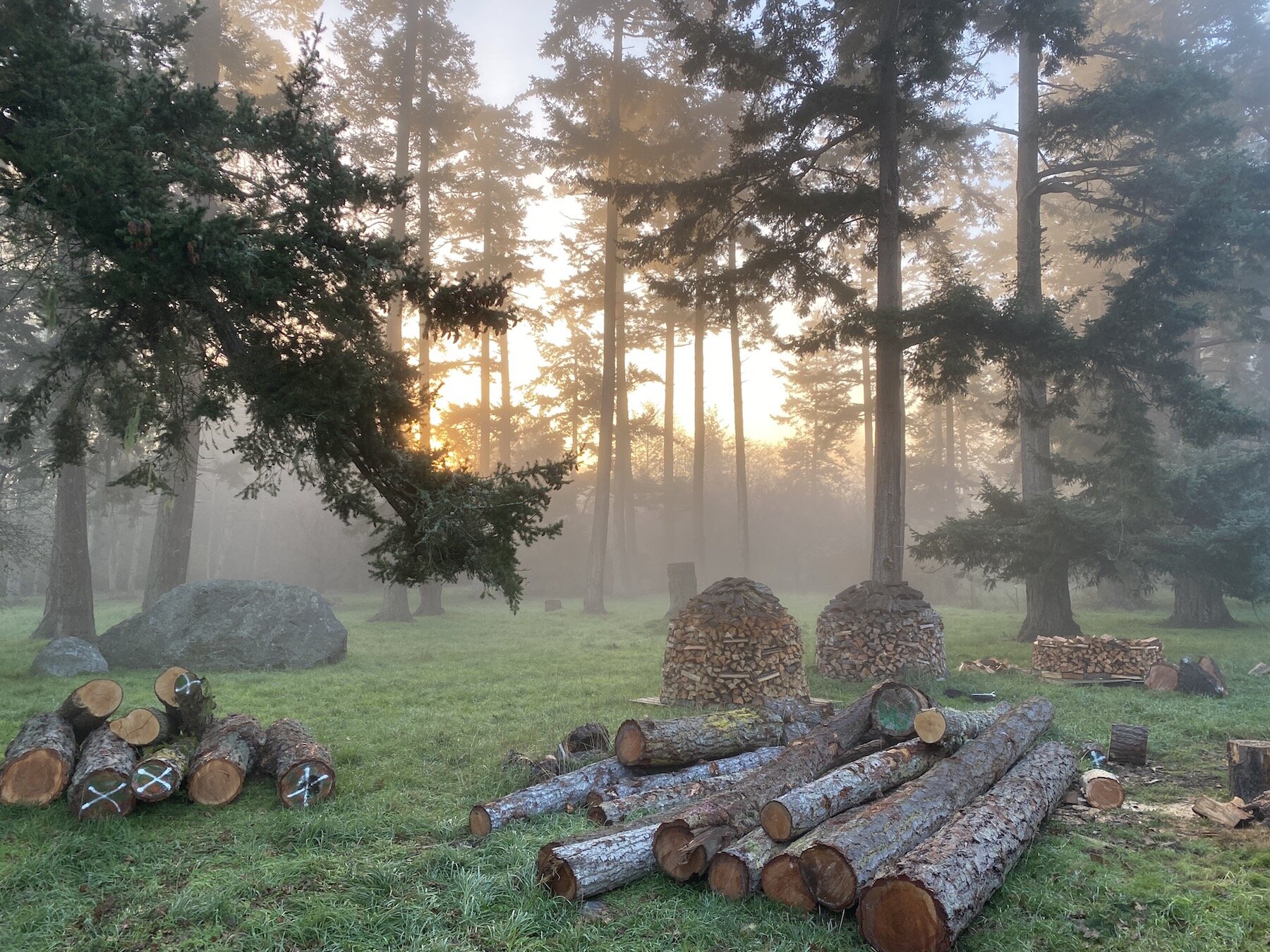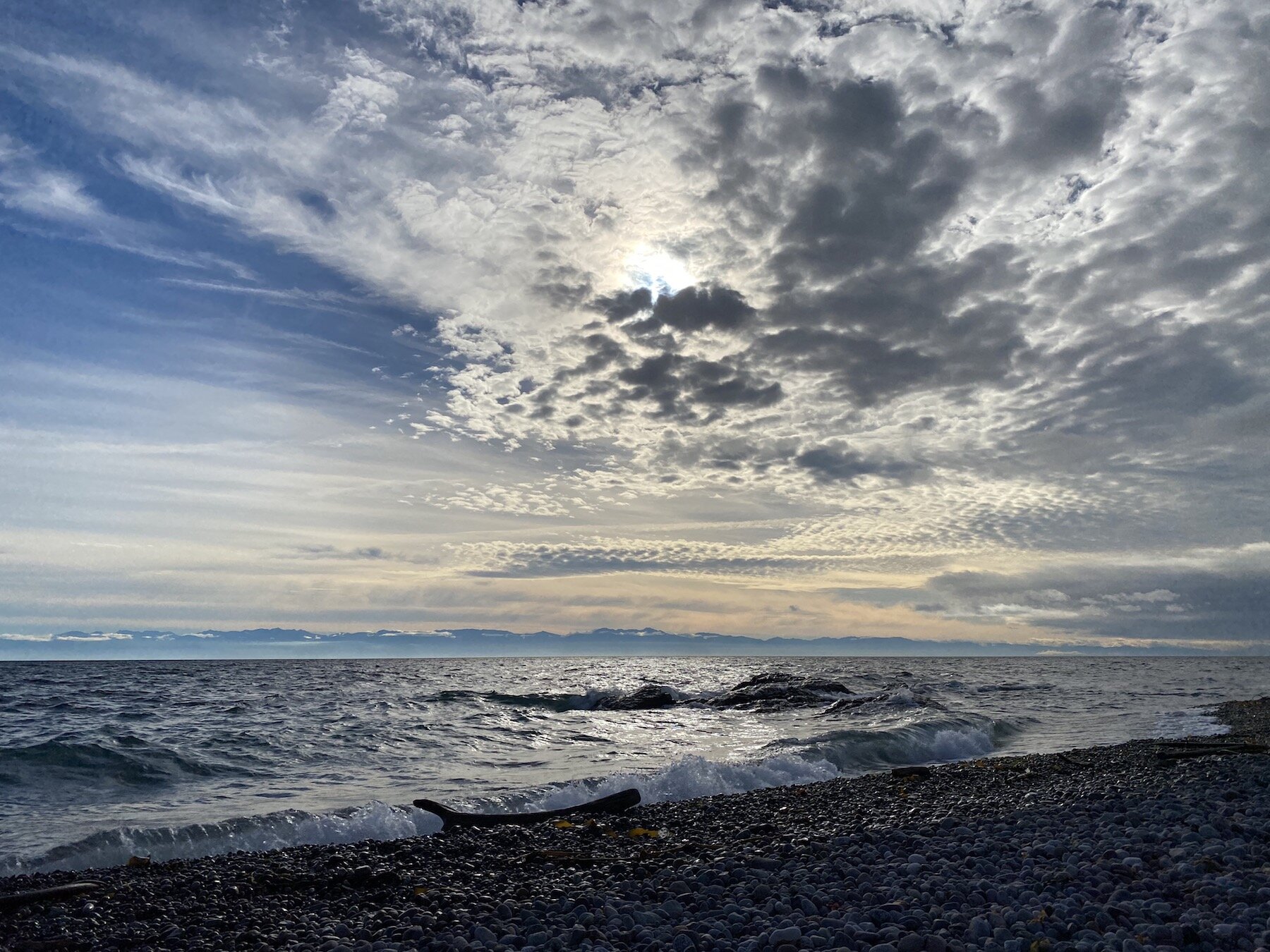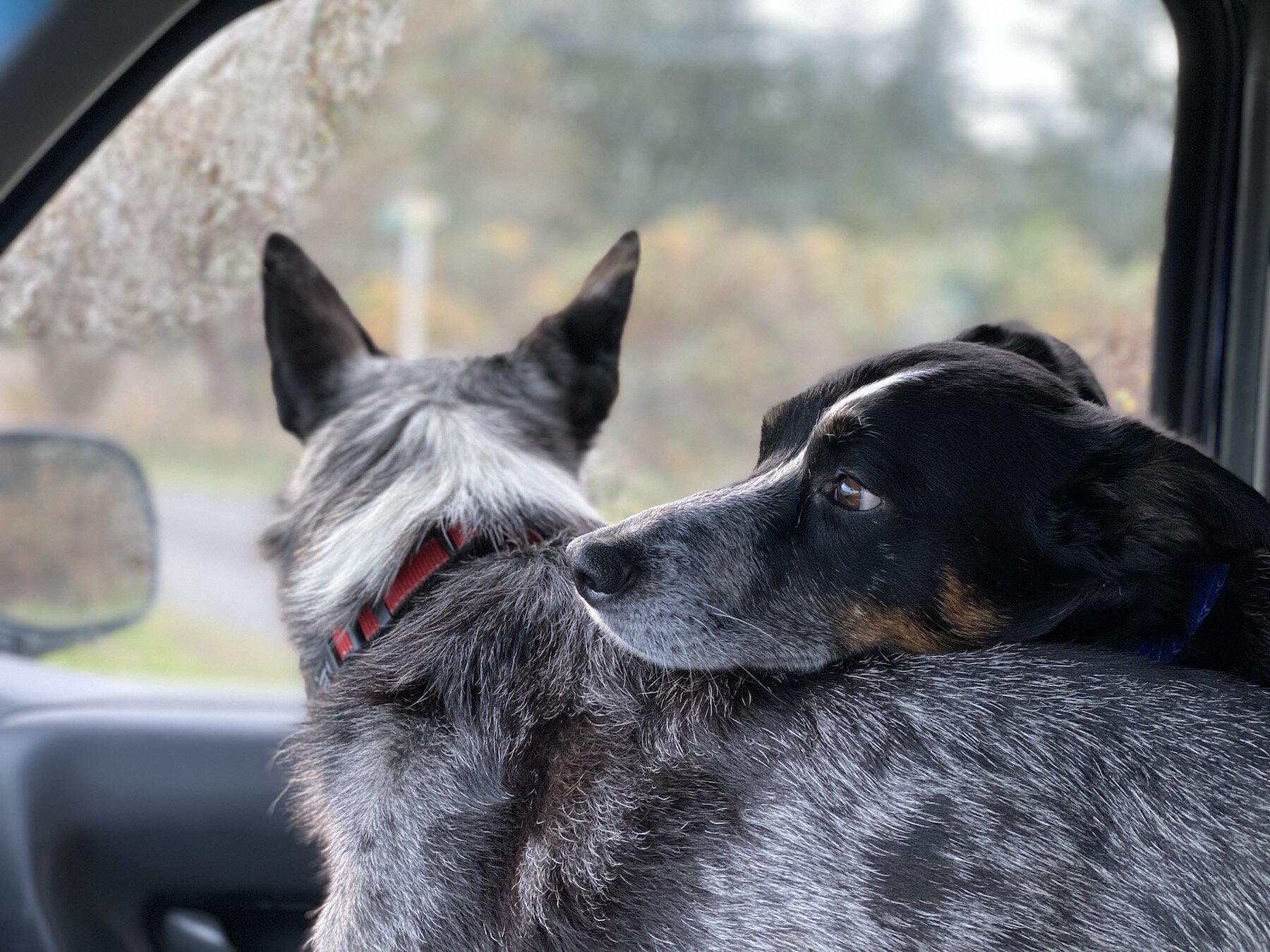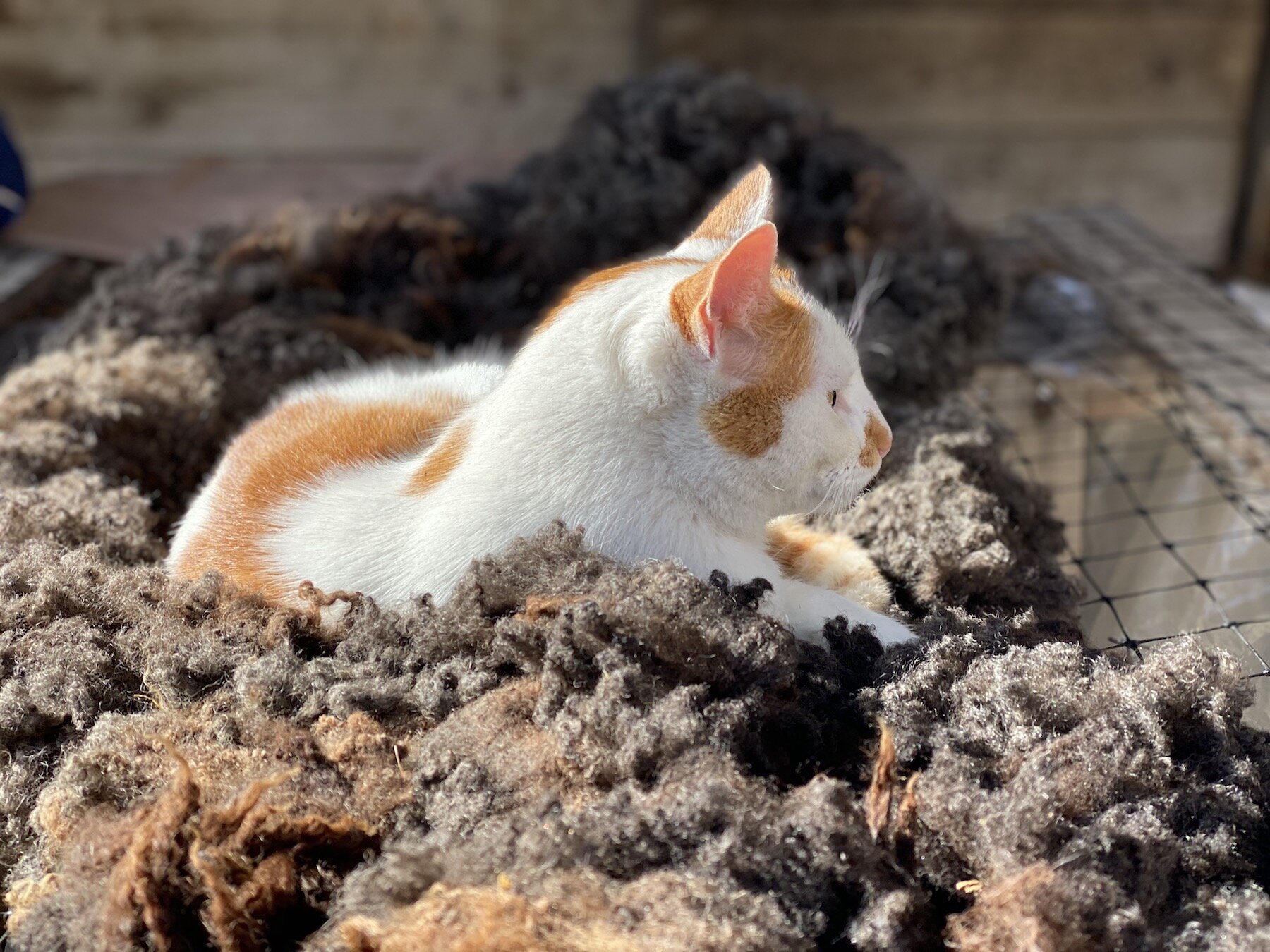Sheep shenanigans
It’s November, the time when we put the rams to the ewes for April lambs. I’m setting fence on a drizzly day out at the Three Meadows pasture, a piece of land we’re leasing on a work trade agreement to build our understanding of restorative grazing practices and relieve pressure on our fields at home for a few months. This is low ground, and if common sense didn’t tell us it would be saturated all winter, the plant community of sedges, buttercup, and reed canary grass around the margins would. We’re moving the sheep rapidly to make the most of the grazing before the ground gets soft and we need to retreat to high ground, so every few days we’re stamping in another length of electronet and inviting the flock into a fresh space.
Over the past week we’ve been shuttling sheep to and fro to separate the ewes who’ll be with different rams and take everyone who isn’t on the breeding list back home, which means penning the whole bunch with a long, dog-assisted drive across twenty acres, catching one ewe at a time, wrestling her out of the pen, and then hefting her into the back of our Ford Ranger with its homebuilt wooden canopy. The Ranger only holds five or six full-grown sheep at a time, so it’s a lengthy process and a bit of a circus. At one point a two-year-old North Country slipped my husband’s grasp with a skyward twist as he prepared to boost her into the truck, and rather than let go, I dragged her sideways and over. As I lay pinned with the ewe peddling clouds above me, I thought how this might not be so much fun in another 25 years and we should really think about investing in a proper system of chutes and panels!
Back at Oak Knoll Farm, we already have our young North Country ram, Jupiter, in with a couple of ewes who are too closely related to the new guy we’re using this year. (His name is Spartan and he came from Dee Samson’s flock in southern Oregon. We actually competed against him in the 2017 national show, where he was sold to someone in Washington and eventually made his way to the island, where we did a swap with our friends at Lazy G Ranch and brought him to our farm this fall.) Jupe got bored with his admittedly small harem and busted a couple of fences to go join Salty the Finn ram’s larger flock, and the effort of fetching him out and returning him to his appointed place was enough to convince me I needed a lot more distance between groups. (Picture 135 lbs of me pinning 275 lbs of muscle hopped up on ewe fumes in the corner of a shed while yelling directions to my elementary schoolers to reset fence lines, sort sheep into a safer area, and recapture three errant ewes who’d taken off across the field… thank goodness my deputy shepherdess has been teaching herself to operate the sheep dog!) So today, at Three Meadows, I’m dividing the two groups sharing this pasture kittycorner.
Finn x BFL/longwool ewes with Chico the llama at Three Meadows
I hear a little squall coming across the field before I see it—a sizzle warning me to pull up my hood as a veil of rain sweeps across the valley. It’s a very little cloud trailing her skirts, but it passes directly overhead and for about twenty seconds it’s raining hard. Then the tiny storm speeds south and I watch it ruffle a patch of golden poplars before disappearing over the fir forest. The sheep across the field haven’t even gotten wet.
Tragedy strikes the same way. Cygnus, my favorite of the rams, broke his leg during rough play with his brothers. We were hoping it might be a ligament tear, but an x-ray showed he had snapped off the growth plate of the femur and that’s an injury that can’t heal. Knowing he would never be able to bear weight on that leg and that he was certainly in a lot of pain—not that he showed it; this sweet ram allowed me to palpate him all over trying to diagnose the problem and manipulate the broken bone without any restraints but the lure of the hay feeder—we knew it was the right decision to put him down. I miss his handsome face at the gate and wish he could have lived for years and sired lambs for us. Farming is the whole arc of life and some episodes really rub your nose in it.
Cygnus with his little Finn friend, Solar
There’s solace in wool work, though. When it isn’t too chill and damp to have my hands out of my gloves, I’m sorting through the last of the 2020 fleeces. I have a carder on loan from a friend to start playing with batts from some of our shorter-stapled fleeces this winter. And I’m taking a lot of pleasure in knitting a sweater from our Spyhop yarn. It’s fascinating to see the differences between the breed-specific and crossbred wool yarns. My daughter is working on her first sweater with a special micro batch yarn we had milled from her little Finn ewe Fennel’s lamb fleece. It’s incredibly soft and fluffy and notably different from Spyhop, which is from lambs that are half Finn and half BFL/longwool. Spyhop has more structure and luster and just a hint of crunch from the longwool side, and to me it’s a heady experience to be able to feel those breeding decisions running between my fingers. We’re putting the first batch of those half-Finn ewes to Lady Jane Junior, the BFL x Sally Bill Special ram, to launch the next generation of the Oak Knoll fiber flock. Lady Jane Junior (he’s named for his mother, okay?) has magnificent silver curls and I think his offspring with these Finn x ladies will grow really fun handspinning fiber. Maybe by the time they’re ready for their first shearing we’ll be able to welcome farm visitors again and offer fleeces for sale in person… I hate mailing them because it’s so expensive to ship voluminous packages even if they’re light. But I do hope to have batts and roving available in 2021 to make our wool available to spinners. Me, I’ll be practicing my woolen longdraw this winter.
What projects and new learning are carrying you through this turbulent time?
